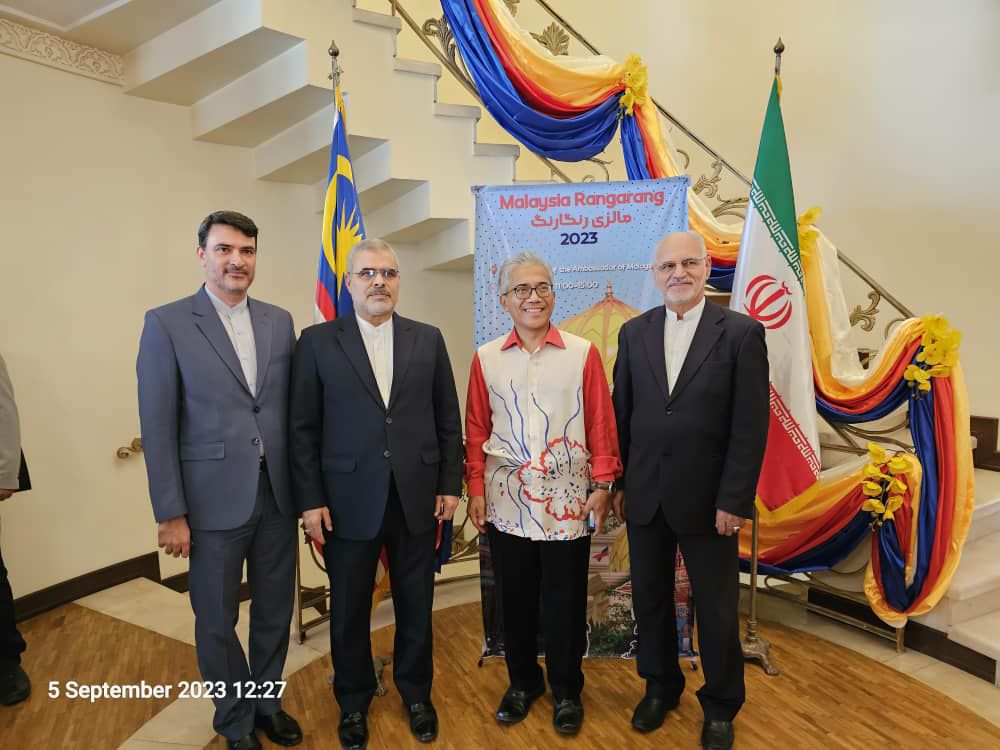Before and After Understanding August 19, 1953 Coup
TEHRAN (Iran News) Wilson’s cabinet had become sensitive to Britain’s imperial greed and was devising plans to penetrate the areas under British influence. For this purpose, they submitted a bill for U.S. membership in the League of Nations to Congress and persistently pursued its approval. However, with the maneuvering and influence of Britain in Congress, the Senate rejected the bill, and the task of smoothing the way in the clash of interests fell to the next U.S. president.
In the November 1920 elections, Warren G. Harding of the Republican Party won and officially began his presidency on March 4, 1921.
At exactly the same time, Britain’s attempts to implement the 1919 Agreement in Iran met with opposition from religious leaders and the Iranian parliament, and the plan to replace Ahmad Shah with Reza Khan was put into motion. We should not forget that in these very years Britain was devising ways to hide itself from U.S. scrutiny, and in the House of Commons it was preparing the mechanism for implementing what became known as “Neo-Colonialism” — to remain in countries for the sake of protecting its colonial interests without being visibly present.
From 1920 to 1950, Iran and the world experienced the eras of World War I and World War II. Artificial famine in Iran — Britain’s revenge against the Iranian nation’s quest for independence — the occupation of Iran, the exile of Reza Khan, his replacement by Mohammad Reza, the plundering of oil, the Tehran Conference, and so on, all occurred in these 30 years. One wave after another, one storm after another, robbed the oppressed Iranian nation of peace and rest.
In this same 30-year period, the United States was grappling with the continuation of the Great Depression, the Wall Street crash, the widening Gini gap, inflation, and more. Across four election cycles, Calvin Coolidge (1925–1929, Republican), Herbert Hoover (1929–1933, Republican), Franklin Roosevelt (1933–1945, Democrat), and Harry Truman (1945–1953, Democrat) came and went. After the end of World War II — and just four months later — the atomic bombings of Hiroshima and Nagasaki took place, as a show of U.S. power to the world. Then came the Cold War and the Marshall Plan, aimed at countering Britain’s “New Colonialism.”
In Iran, the National Front was formed and placed Iran’s interests in cooperating with the U.S. against Britain on its agenda. Oil was nationalized, but there were no buyers.
Dr. Mohammad Mossadegh, in order to sell oil and escape Britain’s sanctions, turned to Harry Truman for help, and a fragile understanding was reached — but Britain was not idle.
They wrote to Truman that Mossadegh was supported by two groups — political religious forces and leftist Tudeh Party members — and that if he gained economic power, he would set the U.S. aside. They suggested that it would be better to bring back Mohammad Reza Pahlavi, who would forever be a servant to both Britain and the U.S. Thus, the Ajax plan was drawn up.
On August 19, 1953 (28 Mordad 1332 in the Iranian calendar), a turning point in modern Iranian history occurred. On this day, a quasi-military coup, designed and supported by U.S. (CIA) and British (MI6) intelligence agencies, was carried out against the legitimate government of Prime Minister Dr. Mohammad Mossadegh. The coup led to his overthrow and the return of Mohammad Reza Pahlavi to power.
Mossadegh, as the leader of the National Front, had nationalized Iran’s oil industry, which was under British control through the Anglo-Iranian Oil Company. This provoked Britain’s fierce opposition and triggered international sanctions against Iran.
Educated in Switzerland, Mossadegh sought to limit the Shah’s powers and strengthen democracy in Iran, which attracted the interest of the nascent Western powers. In August 1953, under British planning, the Shah issued a decree dismissing Mossadegh, but Mossadegh, with the support of the people and the army, declared it invalid. Subsequently, CIA and MI6 operatives, in cooperation with a network of royalist supporters (led by Fazlollah Zahedi) and army officers, launched attacks on Mossadegh’s residence and government offices.
After several hours of rabble-rousing and creating artificial chaos in the streets of Tehran, the so-called coup forces prevailed. Mohammad Reza, who had fled to Rome after signing Mossadegh’s dismissal order, returned to Iran two days later (August 21) and appointed Zahedi as prime minister.
Mossadegh, accused of acting in the national interest, was tried in a military court and sentenced to three years in prison. After his release, he lived under house arrest in Ahmadabad until his death in 1967 (1345 in the Iranian calendar). Members of the National Front, such as Hossein Fatemi, were executed or imprisoned.
The U.S.-Britain dispute turned into cooperation, and a new oil consortium dominated by American and British companies was formed. From that point on, U.S. influence in Iran intensified, with tens of thousands of advisers present in the country. This continued even after the Shah fled on January 16, 1979 (26 Dey 1357), until, less than a year later, with the victory of the 1979 Islamic Revolution, the U.S. embassy — dubbed the “den of spies” — was seized and America’s hand was cut off from plundering Iran.
Classified CIA documents released in 2013 confirmed that the coup was a joint U.S.-British operation (codenamed “Operation Ajax”). In 2013 (1392 in the Iranian calendar), the U.S. government officially apologized for its role in the coup, but did not stop its extortion. Therefore, national resistance against colonialism, the protection of democracy from being sacrificed, and the preparation of a religious foundation for the emergence of the savior of humanity have continued and have always been on the agenda of the Iranian people’s struggle.
- author : Hamid Reza Naghashian
- source : IRAN NEWS




























